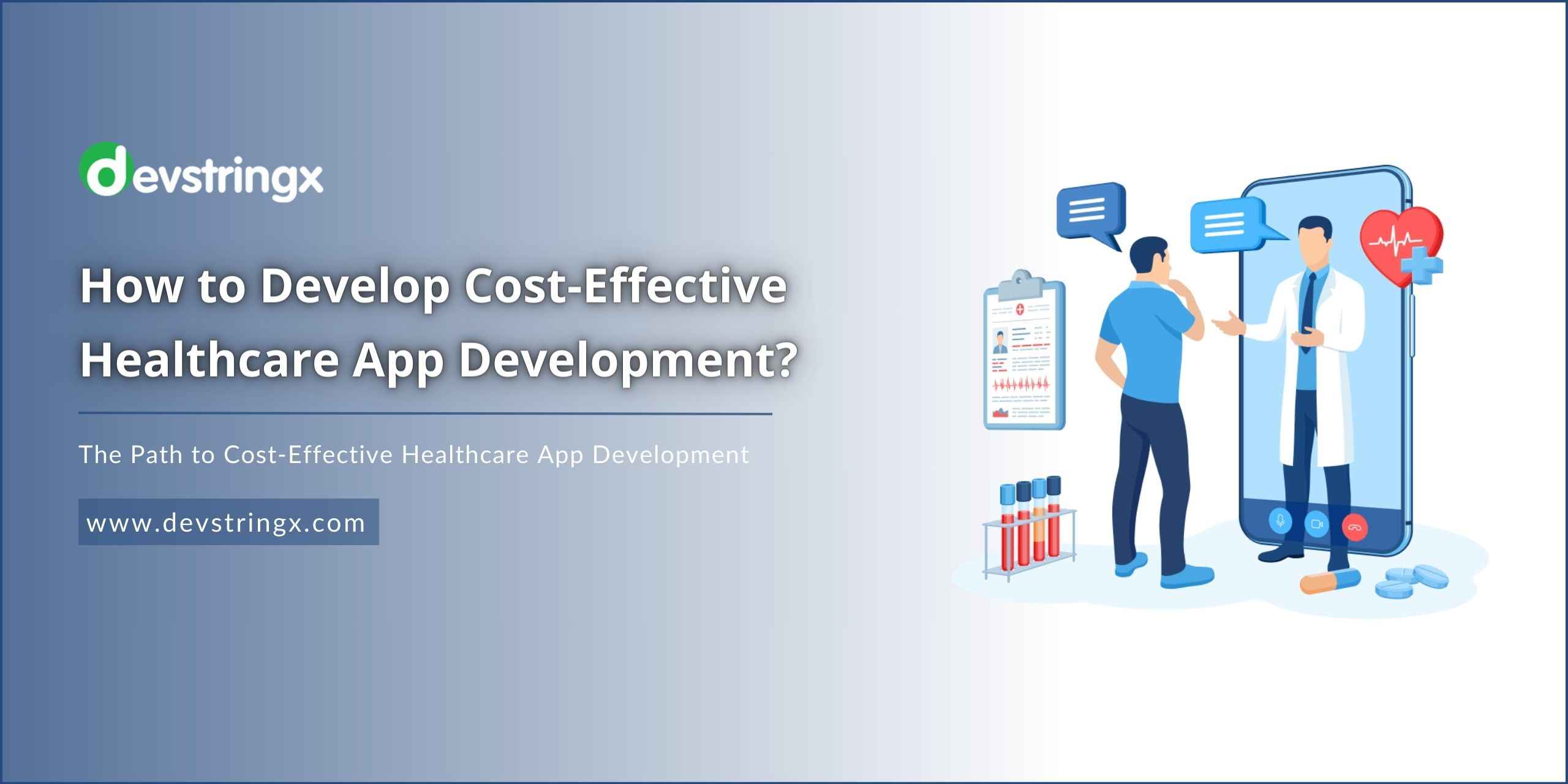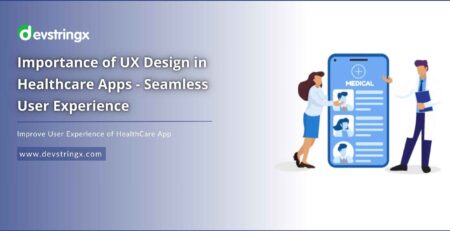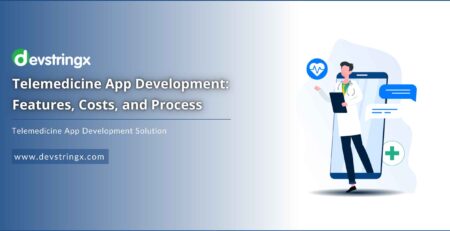Maximizing Budgets: The Path to Cost-Effective Healthcare App Development – DS
How to Make a Cost-Effective Healthcare Application?
The trend of healthcare apps has created a booming industry that offers opportunities in care, data management, medical education, and more. However, developing cost-effective healthcare applications can be challenging due to constraints, regulatory requirements, and the high expectations of users.
Understanding Market Demands and Regulatory Ecosystem
Creating cost healthcare apps starts with gaining an understanding of market needs and the regulatory environment. Developers must acknowledge the unique requirements and limitations in developing healthcare applications. It is because the sensitivity of data and the critical nature of healthcare services differentiate it from other domains.
1) Identifying Target Audience
It is essential to research and comprehend your user base thoroughly. Whether your app caters to patients, healthcare professionals, or administrative staff will impact its design, functionality, and cost. Conducting surveys or interviews with users can provide thorough insights into their needs and expectations.
2) Understanding Regulatory Requirements
Healthcare applications are bound by laws and regulations such as HIPAA in the United States GDPR in Europe, and other regional data protection and privacy laws. Failure to comply with these regulations can result in fines, legal complications, and a loss of user trust, which can significantly impact costs. Investing time to understand these regulations will ensure that your application adheres to guidelines, saving you potential future expenses for redevelopment and legal issues.
Strategic Planning Before Development
Planning involves conducting a risk assessment to anticipate potential problems and devise strategies for mitigating them. It helps prevent unexpected delays and ensures the continuity of your project. Additionally, this phase should include a feasibility study that evaluates the economic and operational aspects involved. By doing so, you can avoid investing in solutions that are not viable, ultimately saving both time and capital.
Moreover, a coordinated plan aligns the efforts of the teams involved, fostering collaboration while reducing redundant tasks. It ensures that every stage of development is aligned with the projected budget and overarching business goals.
1) Establishing Clear Objectives
Define measurable goals for what your healthcare application aims to achieve. These objectives could include enhancing patient engagement, streamlining appointment scheduling procedures, or providing telemedicine services. Defined goals help keep development on track while avoiding features that inflate costs.
2) Prioritizing Features
Start by creating a prioritized list of features to make a distinction between the “must haves” and the “nice to haves.” This approach will help allocate your budget, ensuring that essential functions receive resources.
3) Developing a Realistic Budget
Analyze the costs associated with the prioritized features and consider the expenses for design, development, testing, deployment, and marketing. It’s always crucial to include a contingency amount to cover any unanticipated costs that may arise.
Good to Read:- How Much Does it Cost of Making an Mobile App in India?
Embracing Agile Methodology for Development
Agile methodologies prioritize communication and feedback, emphasizing adaptability to changes and uncertainties rather than strictly following a fixed plan. It aligns with the healthcare industry’s need for adaptability to new information or technologies while maintaining relevance, user-centricity, and compliance with medical or legal insights. Moreover, Agile fosters cross-functional collaboration among professionals, regulators, and software developers to collectively contribute to building a reliable and secure healthcare application.
1) Flexibility and Adaptation
With methodologies in place during development, you can easily incorporate changes or additions without delays or additional expenses. This flexibility prevents costs from escalating due to unanticipated needs or regulatory adjustments.
2) Continuous Feedback
Regular testing and feedback are crucial in agile methodology. By evaluating the application with end users, developers can detect any issues or unmet requirements, which helps minimize the expensive consequences of making changes during later stages or post-launch fixes.
Investing in Interoperability
Interoperability not only improves the flow of information, enhancing decision-making and patient outcomes but also reduces errors caused by manual data entry and inconsistent information — a common challenge in healthcare settings. It supports a healthcare approach that allows various specialists to access and contribute to a patient’s care record, optimizing treatment plans and avoiding unnecessary repetitive tests or procedures. Moreover, in an evolving healthcare ecosystem, interoperability facilitates approaches like telehealth and remote patient monitoring.
Additionally, it lays the groundwork for leveraging technologies such as AI and big data analytics, enabling insights and personalized care. Ultimately, this leads to positive health outcomes and cost savings.
1) Enhancing Care Collaboration
Interoperable applications foster care by facilitating communication between different healthcare systems, providers, and patients. This streamlined efficiency reduces procedures and costs associated with healthcare services.
2) Future Proofing
By investing in interoperability, we ensure that a healthcare app can adapt to advancements and regulatory changes, protecting against obsolescence and eliminating the need for costly overhauls or replacements.
Ensuring Data Security
Incorporating security measures is crucial to safeguard health information from unauthorized access and cyber-attacks. It maintains the integrity of data and ensures compliance with global data protection regulations. Establishing trust through secure operations encourages user adoption and engagement, which are vital for the long-term success of the app. Powerful security frameworks also minimize the risk of data breaches that not only result in financial penalties but also damage brand credibility and patient trust. Proactive security investments such as system audits, encryption, and employee training on data privacy practices create a defense to protect user data and preserve the organization’s reputation.
1) Preventing Breaches
By implementing security protocols like encryption, two-factor authentication, and secure data storage, we can proactively prevent data breaches. It helps avoid penalties, litigation costs, and irreparable harm to the brand’s reputation.
2) Building Trust
Demonstrating a commitment to data security builds trust among users. When users have confidence in an app’s security measures, they are more likely to engage with it, contribute their data, and recommend it to others. This enhances the value and usefulness of the app.
Good to Read:- The Importance of UI/UX Design in Healthcare Apps
Continuous Evaluation and Iteration
After the launch, it becomes essential to monitor the performance of the app. Real-world usage often reveals opportunities for optimization that may not have been apparent during the development stages. These insights drive improvement efforts, allowing us to refine features, address any bugs, and enhance the user experience. By doing so, we can ensure that our app remains relevant and has a long lifespan in the market.
Regular updates based on user feedback and advancements in technology demonstrate our commitment to our users, fostering loyalty and encouraging engagement – both of which are vital for generating revenue. Additionally, it is crucial to reassess the app’s compliance with any updated regulations after its launch. It helps us maintain standards while preserving user trust. By allocating resources for these evaluations and iterations, we can keep our app competitive in a market by catering to evolving user needs and expectations – ultimately maximizing our return on investment.
1) Gathering User Feedback
It is important to collect feedback from users to gain insights into how they’re receiving our app. User reviews can potentially uncover issues. Offer valuable suggestions for expansion – guiding us toward cost-effective iterations.
2) Performance Analytics
Utilizing analytics tools allows us to monitor metrics related to app performance, such as user engagement, retention rates, and load performance. Regular analysis enables us to identify problems before they escalate into significant issues – ultimately saving us from costly emergency fixes.
3) Planned Updates
It is essential to allocate resources for scheduled updates and maintenance. By investing in improvements, we can prolong the lifespan of an app, enhance user satisfaction, and avoid costly overhauls.
Conclusion
When it comes to developing cost-effective healthcare apps we must prioritize quality without cutting corners. Taking a holistic approach is crucial as we navigate the challenges of the healthcare sector, such as strict regulations and the critical importance of data security. By understanding and respecting these challenges, developers can make investments in their apps, ensuring affordability, compliance, and lasting value for users.
Developers should remain informed, plan appropriate development methodologies, and commit to continuous evaluation and iteration. In doing so, they will maximize their development budgets and contribute positively to a healthcare environment that effectively utilizes technology for efficient care that is accessible and of high quality.
Revolutionize healthcare with our top notch Healthcare app development services – Hire us for cutting-edge solutions that redefine patient experiences!














